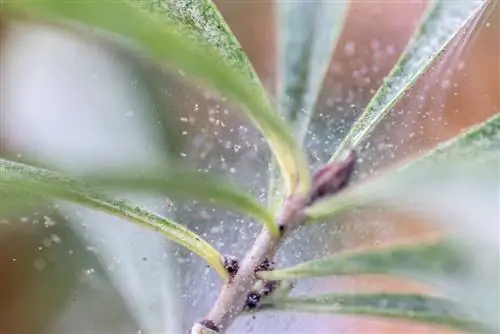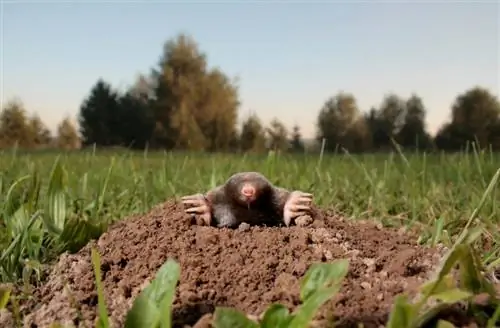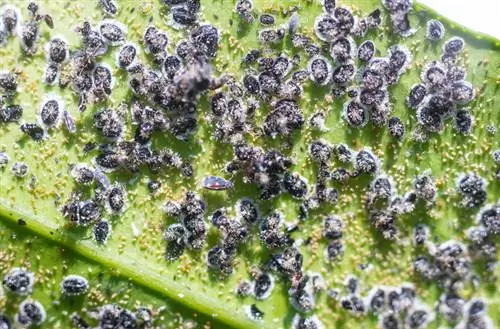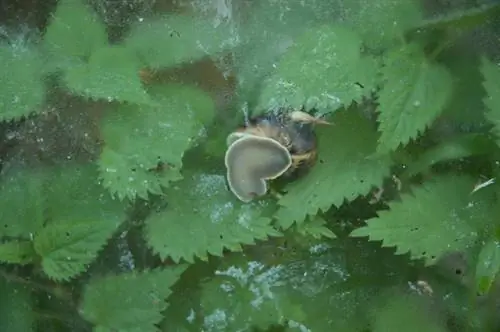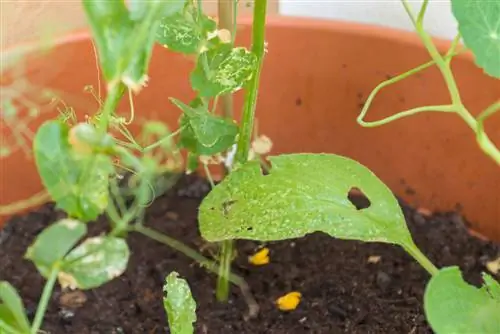- Author admin [email protected].
- Public 2024-01-10 23:11.
- Last modified 2025-01-23 11:22.
It hums, buzzes or crawls - pests on houseplants are not uncommon. Would you like to know more about the causes and their treatment? Then you will find all the answers to your questions on this page. You will also get an overview of the most common types of pests and learn to differentiate between them based on their symptoms.
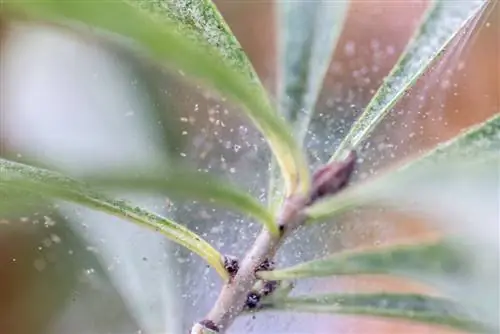
How do I recognize and combat pests on houseplants?
Houseplants can be attacked by various pests such as fungus gnats, aphids, spider mites or scale insects, which are noticeable due to yellow leaves, curled leaves or knob-like growths. The most effective treatment options include drying or showering the plant, biological sprays or isolation.
General symptoms of pest infestation on houseplants
- yellow leaves
- rolled leaves
- bubble-like growths on the leaves
- Mildew (white, sticky coating)
- small fruiting bodies on leaves and stem
- floating flies
- Stunting
- feeding marks
- cobweb-like threads
The most common pests on houseplants
Sad gnats
Sickness gnats are small black flies that float up when they touch the plant. The adult generation can be seen with the naked eye and is extremely annoying. Much worse, however, are the young maggots that live in the plant's substrate and feed on the roots. As a result, wilted parts of the plant are an indication of an infestation. For treatment, it is best to dry the plant if it can tolerate this measure. Stop watering completely for a few days. Fungus gnats love moist soil and soon lose interest in their chosen habitat. It should also help to cover the bucket with plastic film.
Aphids
The well-known honeydew, a mealy, white, sometimes sticky coating on the leaves, comes from aphids. The small pests come in numerous colors such as yellow, red, black or green and suck the plant sap from the leaves. They prefer to stay on the underside of the leaves. If the leaves of your plant curl up, an aphid infestation is very likely. Young plants in particular are affected and suffer great damage. With a minor infestation, it helps to shower the affected plant. For biological control, prepare a spray from water, soft soap or neem oil. Repeated application is often necessary.
Spider mites
Spider mites are known for the fine threads they spin around the leaves. What is largely unknown, however, is that not all species make themselves felt in this way. Without the typical symptoms, an infestation usually goes undetected. The consequences for the houseplant are fatal:
- Curves of leaves
- Discoloration of the leaves
- complete leaf shedding
- Death of the plant
- Spider mites move to neighboring plants
To combat spider mites, first remove all parts of the plant that show the symptoms mentioned. Try to drive away the pests by rinsing the plant with a strong stream of water. However, most of the time a handful of animals survive this measure. Experts also recommend insulating the plant, putting a plastic wrap over the pot and storing the plant in a separate place for around ten days.
Scale insects
Scale insects manifest themselves in small bumps on the houseplant. Just like aphids, they secrete honeydew and cause the plant to drop its leaves. Fortunately, a small infestation remains relatively harmless. Nevertheless, you should fight the pests: a solution of soft soap and water or pure alcohol can help.

